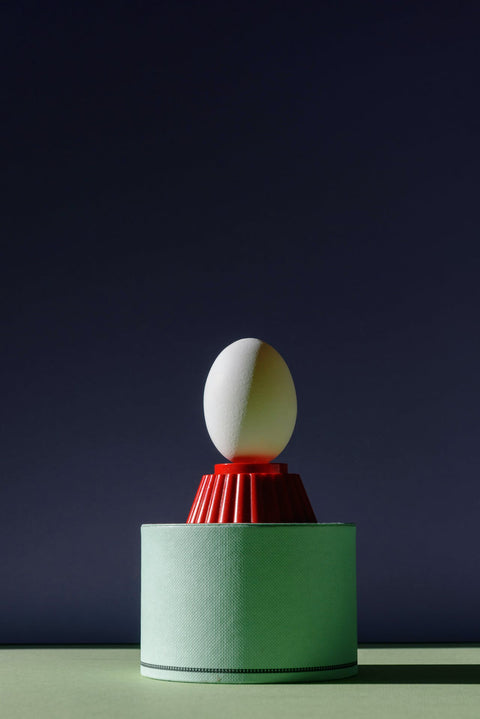|
Want kids one day, but not today? Feel like your fertility is a mysterious black box? Trying to squeeze the most out of your 20s and 30s, but filled with a slight tinge of existential dread about what that means for your fertility? Us too! |
|
|
|
|
|
Today’s topic is fertility and aging. Two words that alone can bring up anxiety, but paired together are a sure-fire spiral starter. The good news? Information is your friend. Information is empowering. |
|
|
How do I even measure fertility? |
|
|
Fertility encompasses hundreds of factors, but the two at the top of mind for most women are the number and quality of eggs. The number of eggs is called your ovarian reserve AKA your piggy bank. Over time, both the number and quality decreases, reducing your chances of getting pregnant without complications. |
|
|
How many eggs do I have? Is it true that I’m born with all of them? |
|
|
All women are born with 1-2 million eggs, which naturally diminish to 300,000-500,000 by the time you hit your teens or early twenties. From there, the number declines with each menstrual cycle until menopause. |
|
|
But wait, am I going to have to suffer through 500,000 periods? |
|
|
Luckily, no. During each menstrual cycle, typically one egg is released from the ovaries during ovulation, but alongside the released egg, 500-1000 immature eggs undergo a process known as follicular atresia where they essentially disintegrate (fun!) This is your body’s way of silently bidding farewell to a cohort of eggs each month, but is an important part of maintaining healthy follicles! |
|
|
If I’m on birth control and I don’t get a period regularly, do those eggs stay in my piggy bank? |
|
|
While certain forms of birth control, like hormonal contraceptives (think pills, patches, injections, and some types of IUDs), can suppress ovulation and impact your period, they typically don't have a direct impact on the number of eggs your ovaries release or the natural process of egg loss. So, even if you're not experiencing ovulation, your body's still doing its thing behind the scenes and bidding farewell to 500-1000 follicles per month. |
|
|
But I thought you were here to talk to me about fertility and aging? |
|
|
Okay, that was your background reading! We like to think about fertility and egg quantity and quality by decade so here’s the breakdown: |
|
|
If you’re in your 20s: This is prime time for fertility. Women in their 20s typically have the highest fertility rates. The average woman in her early 20s has about a 25% chance of getting pregnant during each menstrual cycle. Fertility is generally at its peak in the early to mid-20s, with a gradual decline toward the late twenties. |
|
|
If you’re in your 30s: As we transition into our 30s, fertility starts to decline, albeit subtly at first. By the early 30s, the average chance of getting pregnant during each menstrual cycle drops to around 20%. This decline becomes more noticeable as we approach the late 30s. By age 35, fertility begins to decline more rapidly, and the chance of getting pregnant each cycle decreases to about 15%. |
|
|
If you’re in your 40s: When it comes to fertility, this decade brings some challenges. In the early 40s, fertility takes a more significant hit. By age 40, the average chance of getting pregnant during each menstrual cycle drops to around 5%. And as we progress through the decade, the chances continue to decline further. By age 45, conceiving naturally becomes exceedingly rare, with a very low chance of success each cycle. |
|
|
|
|
|
Take a deep breath! |
|
|
While medical conditions, environmental factors, and genetics can play a role in the number and quality of eggs, there are things you can do to maintain healthy ovaries. Moderate exercise, limited alcohol intake, stopping smoking, and a well-balanced diet can go a long way to preserve ovary health and egg quality. |
|
|
Okay, what’s next? |
|
|
That wasn’t too bad was it? We think information is empowering and allows women to make more informed decisions about their bodies. If you agree, subscribe to our newsletter to catch our future editions. |
|
|
|
|
Upcoming Newsletter Editions: |
|
|
|
|
Editor’s Pick: If what you read today has piqued your interest in measuring or monitoring your fertility, we recommend one of our favorite fertility tests below. We’ll walk you through everything it measures in an upcoming newsletter. |
|
|
|
|
|
|
|
|
|
*The information provided is not intended to be a substitute for professional medical advice, diagnosis, or treatment. Always seek the advice of your physician or any other qualified healthcare provider with questions you may have regarding a medical condition or treatment.
|


